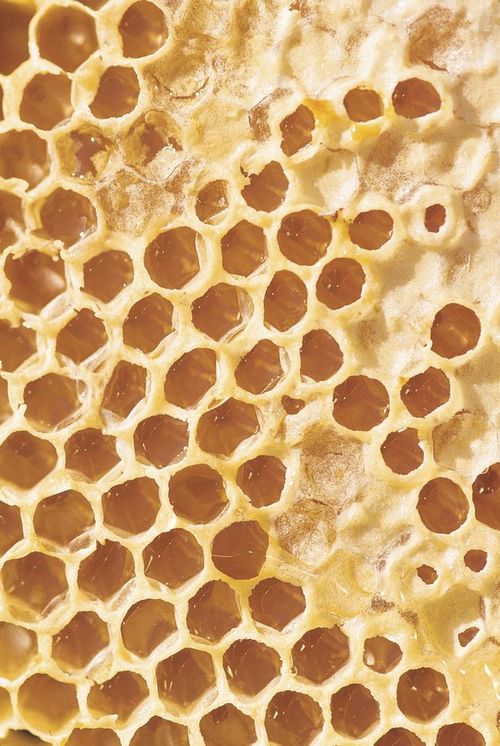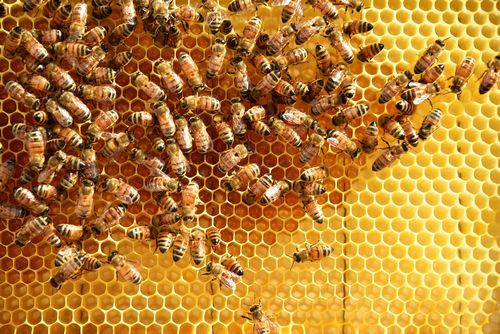
A honeycomb is simply a collection of hexagonal crystal prismatic cells formed by honeybees inside their hives to hold their honey and pollen. The cells in the honeycombs are called honeycombs because the honeybees will build their honeycombs in a structure called a hive or box, in which they build honeycombs with other cells and then store the honeycombs there. Once a honeybee has laid its egg in the honeycombs, it will lay an egg capsule that contains nectar and then the newly hatched larvae will eat the nectar, which will be collected inside the honeycombs by the adult bees.
When honeybees gather nectar and store it inside their honeycombs, a process called foraging begins, which involves the bees collecting the nectar they need from flowers. A honeybee gathers nectar from different flowers, which includes nectar from flowers of both genders, pollens of all types, and even insects. Each type of flower or pollen and insect requires special conditions that are required to collect the nectar and store it for later use in the hive. For example, flowers that are close to the sun will provide the bees with more light and moisture to gather nectar from, and those that are far away will be more dry and dark. The bees will use the nectar from flowers that are close to the sun for food while the bees collect the nectar from flowers that are far away to keep themselves moist and warm.
If the bees gather nectar from flowers near the sun, the pollen from these flowers will not be exposed to extreme temperatures or conditions of the elements, so it will remain safe for the bees to collect and store. Similarly, pollen from flowers that are far away can be collected when the bee collects it, since pollen from flowers that are near the sun will not have been exposed to the elements, and thus will be less likely to cause harm to the bees. In order to get to the nectar that the bees collect, the bees must use the same path as the pollen they collected.
Honeycomb structure is where honeybees store their honey, since bees need honey to feed their larvae. This is where they will collect nectar from flowers that are close to the sun, collect pollen from the pollen that they collected, and use the nectar to feed their young larvae. The larvae then use the nectar that they feed on to grow until they become adult honeybees and are ready to pollinate new flowers or start producing honey.
There are several benefits of having a honeycomb structure for honeybees. One benefit is that the honeycomb structure will reduce the stress of being active in a hive. When honeybees are kept in a structure that is structured and has limited exposure to temperature, the amount of activity will decrease because they will not have to work as hard to produce honey for themselves. Also, the structure prevents honeybees from flying away from the hive and losing all of their honey and other resources.
Another benefit of the honeycomb structure is that it will increase a bee’s ability to feed its larvae with protein and calcium that the larvae need.

Since honey is the key source of protein for the larvae, a structure that limit the amount of energy the bees have to work with and allows the bees to feed the larvae with proteins and calcium will reduce the amount of time and energy the bees must expend to collect energy to produce honey, will also make the larvae healthier. Beekeepers have found that by placing hives in buildings with limited sunlight and moisture, their honeybees will produce honey that is much stronger than the honey produced by honeybees that are kept in structures where they are exposed to much more sunlight and moisture.
Honeycomb structures also help to protect the beekeeper from insects. Some of the insects that could possibly threaten the health of a honeybee include mosquitoes, wasps, ants, spiders, bees, and other insects that could attack the honeybees. A structure that will keep the bees out of harm’s way will give the bees time to work without having to expend energy to protect themselves from these insects.
The honeycomb structure also allows the bees to keep an eye on their larvae. Once the larvae have developed into adult bees, they will feed until they reach about half of their full size. Because the honeycombs are so large, the bees will not be able to feed their young larvae unless they have access to food, which is why the honeycomb structure is placed in a structure that has limited exposure to sunlight and moisture. Also, a large and well-structured structure will keep the larvae safe from harm because a honeybee hive could easily fly into the structure and attack the larvae, causing them to become injured.